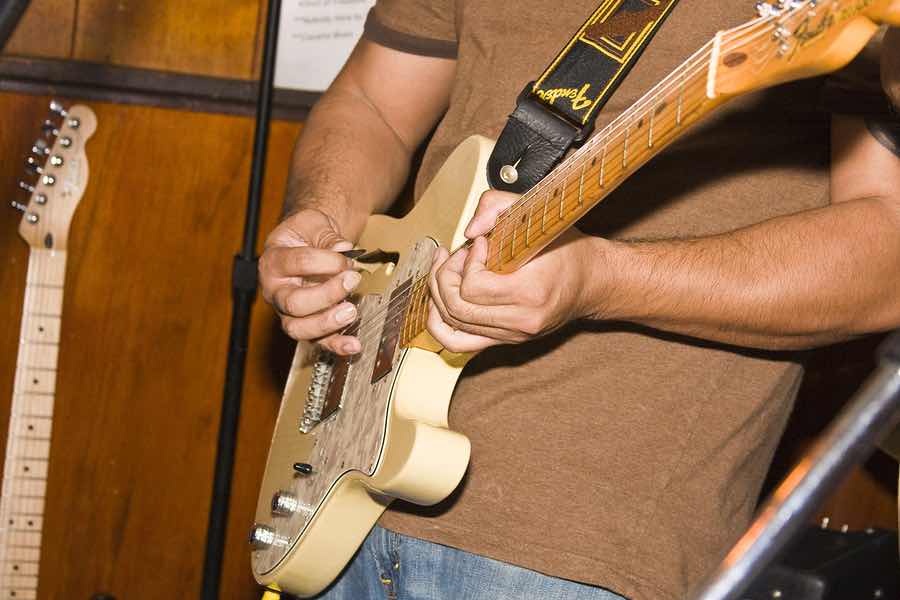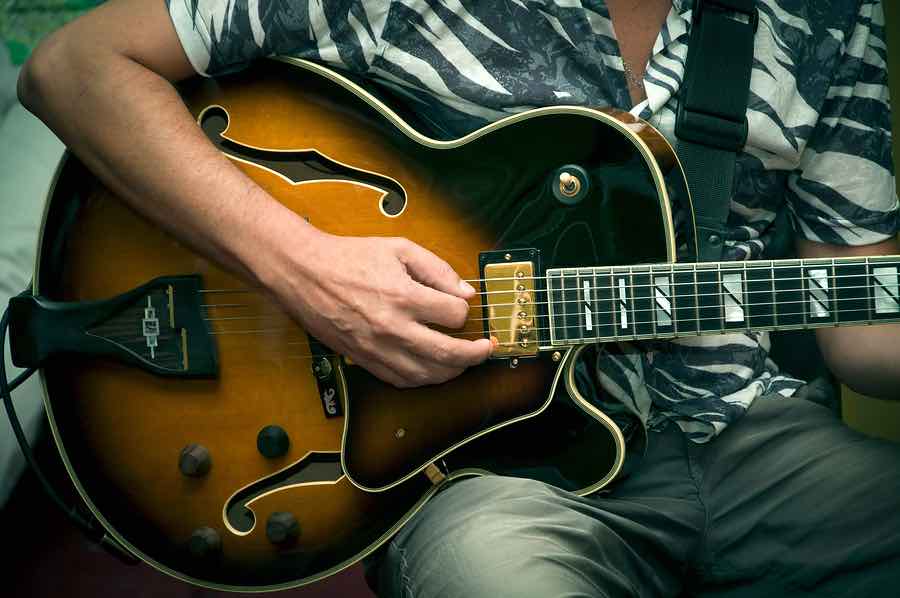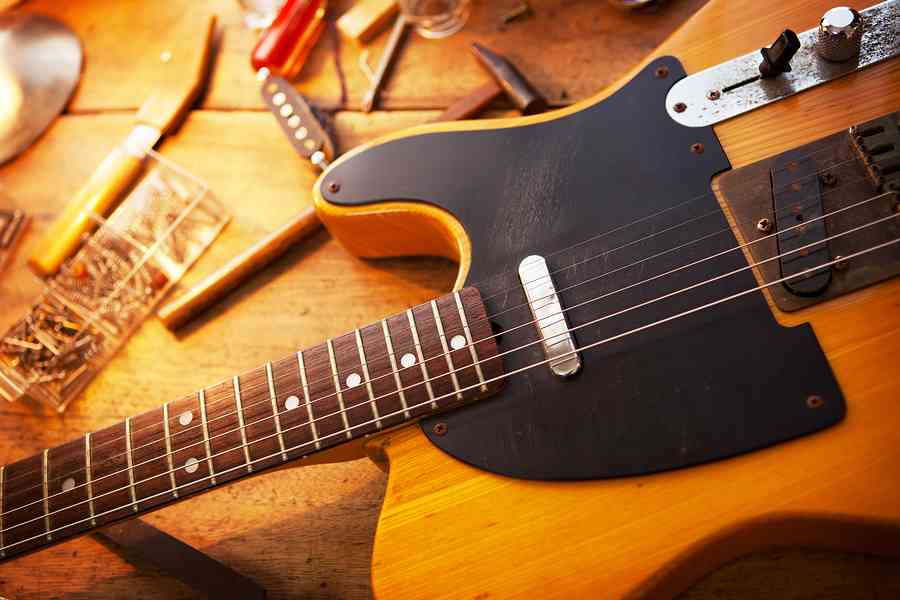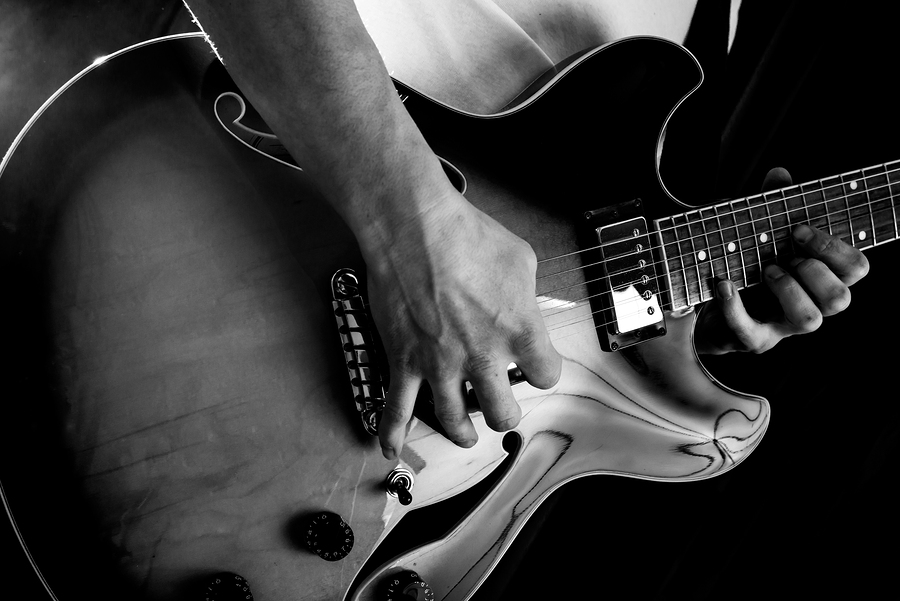Bigstock photo
 A double stop is when you play two notes at the same time, also called “dyads” (you might have heard of the more familiar term “triads” where you play three notes at the same time).
A double stop is when you play two notes at the same time, also called “dyads” (you might have heard of the more familiar term “triads” where you play three notes at the same time).
While solos usually consists of single note lines, you can give your phrasing some extra colour and more chunk by playing some double stops here and there.
Double stops is just guitar slang for “harmonic intervals”. An interval is the distance between any two notes and harmonic means simultaneously sounding tones. Harmonic intervals can be played in thirds, fourths, fifths, sixths and sevenths.
You can hear them a lot in rock and blues and guitar players love using them to enhance their soloing.
Here are two examples of classic blues double stop guitar intros:
Cold shot – Stevie Ray Vaughan
You can apply harmonic intervals to every scale, but today we’re focusing on playing fourths in the A minor pentatonic scale. The application of fourths is one of the most used double stops in blues and rock.
In the tabs below you can see that almost every two notes are on the same fret, so you need to bar two strings with either your first finger (index finger), third finger (ring finger) or fourth finger (pinky). Continue Reading
 So why do you want to use the mixolydian scale for blues?
So why do you want to use the mixolydian scale for blues?
 I just came back from a holiday in Spain. I didn’t bring my guitar on the holiday and I really missed it from time to time, but I enjoyed great quality time with my wife and three kids.
I just came back from a holiday in Spain. I didn’t bring my guitar on the holiday and I really missed it from time to time, but I enjoyed great quality time with my wife and three kids.